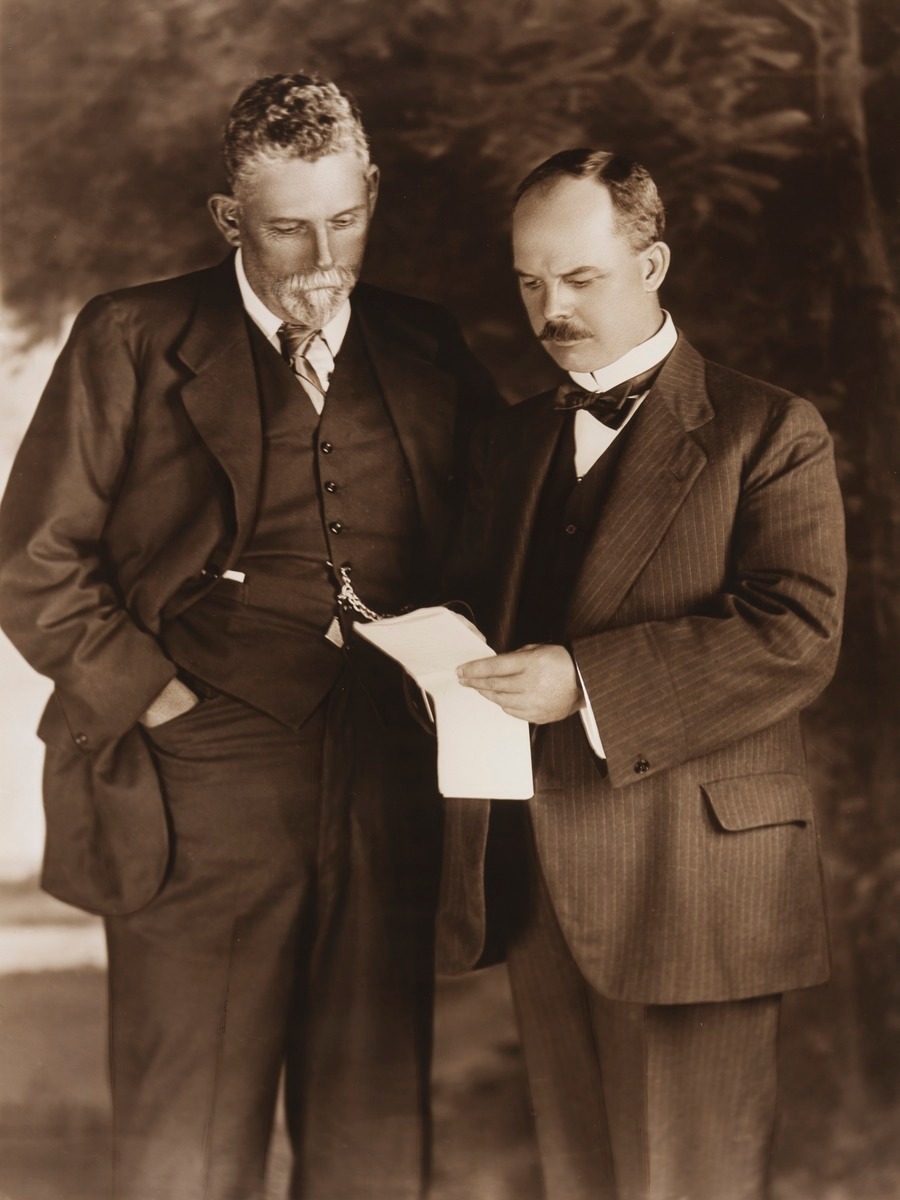About Arthur Bryant Triggs
Arthur Bryant Triggs was a successful Australian pastoralist. He was also a man of learned tastes, a student of literature and a passionate collector during a rich and remarkable life.
Arthur bought and leased many remote station properties in Old Linton (then simply ‘Linton’) in the town of Yass, having up to 500,000 sheep under his watch at a time. A generous benefactor to Yass Hospital and other local community organisations, it was said that 'when Mr Triggs was prosperous, Yass was prosperous'.
Location
Accessibility
Category
Share and save

Arthur Triggs' arrival in Sydney
Arthur Triggs arrived in Sydney from London in 1887. Joining the Bank of New South Wales, Arthur moved to Yass the following year after being appointed the bank’s local branch accountant.
Following Arthur’s marriage to Maria Sophia Ritchie in 1892, the couple lived at her mother’s property, Linton, where their only child Jessie was born.
A career change
In 1895, Arthur began to focus on the land, purchasing 8,000 wethers (castrated male sheep) with station owner Abraham Wade. After acquiring Wade's interest, Arthur sold the sheep at a profit and resigned from the bank.
Following Maria’s death in 1897, Arthur remarried and had 4 children with Mary McBean, the daughter of a nearby pastoralist. He gained sole ownership of Linton after 1908.
The vast scale of Arthur’s farming operations helped maintain sheep values in parts of the state. Realising that investing in sheep was profitable as long as he had enough land, Arthur secured a string of stations from Bourke to Kiandra in western New South Wales. These included Fort Bourke, Wirchilleba, Tara, Merri Merrigal, Wollogorang, Douro, Willie Ploma, Wee Jasper and Talbingo. These land acquisitions helped to ensure his travelling stock was never far from his next property.
Commercial nous pays off
Using an elaborate system of bookkeeping, Arthur conducted business from Cooma Street, Yass. He attributed his success to loyal staff whom he paid well and encouraged in their own ventures. Often purchasing and selling stock without inspection, his instincts were trusted, as was his word.
Drought, financial troubles and the outbreak of war almost forced Arthur into bankruptcy in 1915. He later moved his offices to Sydney and by 1921 – after wool prices bounced back – he had already paid off all his creditors.
Paying it forward
A quiet, cultivated and courteous man, Arthur donated heavily to Yass Hospital, where he served as president, and was a generous financial supporter of local charities and sporting organisations.
Arthur was also a devotee of Greek, the Bible and Shakespeare, and cherished fine items. These included medieval manuscripts, early books, autographs and pictures. Two years after his death in 1936, Arthur’s widow donated his collection of 2,500 rare coins to the Nicholson Museum of Antiquities at the University of Sydney.
In 1939, an impressive gateway was erected in Arthur’s memory at the entrance to Victoria Park, Yass.
And in 1945, Linton was acquired by the Australian Government to serve as a war veterans' home, enabling Arthur’s legacy to live on in the community of Yass.
